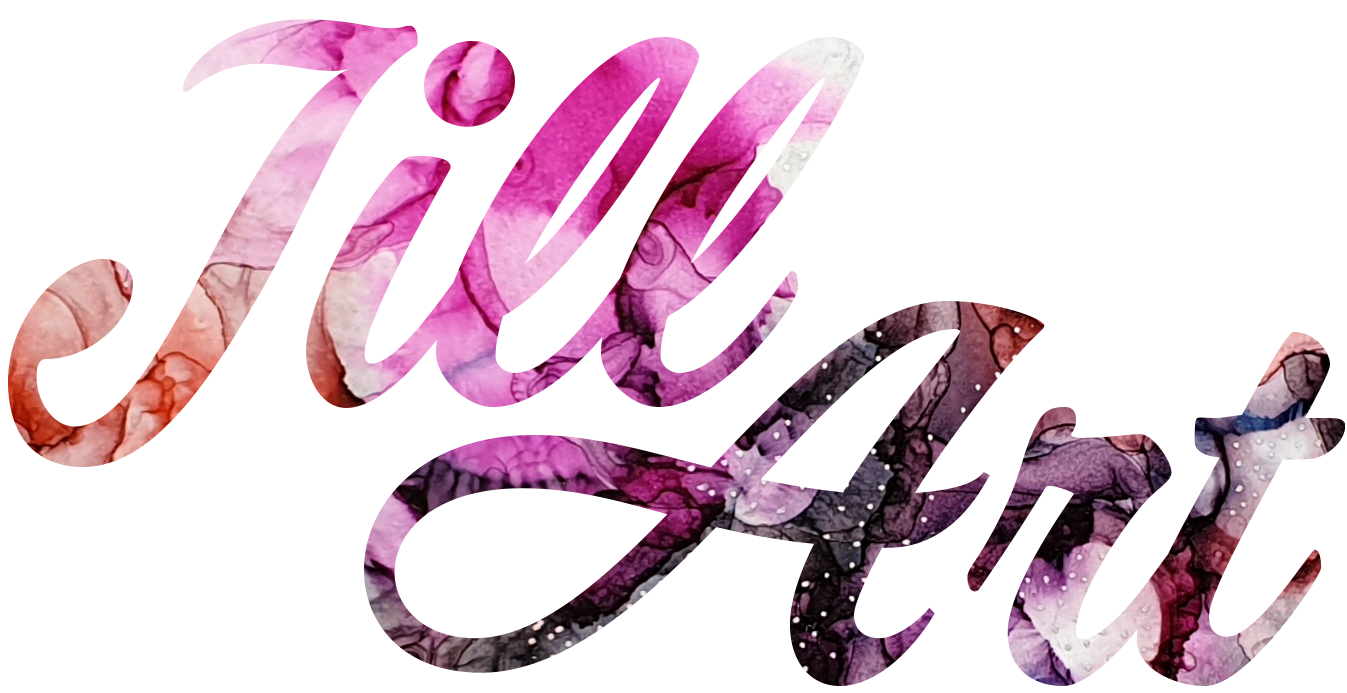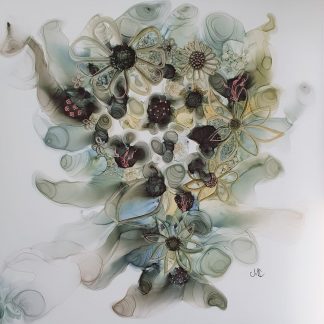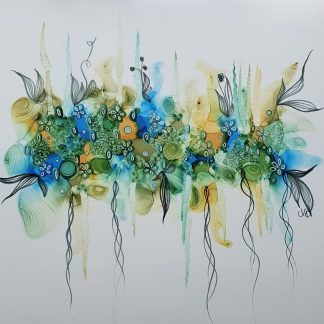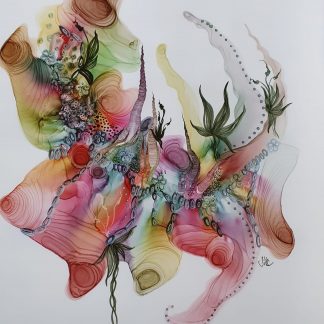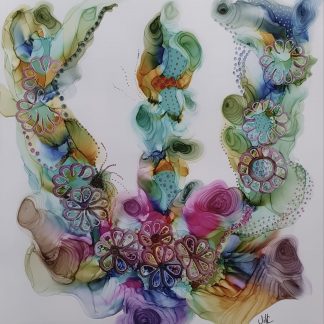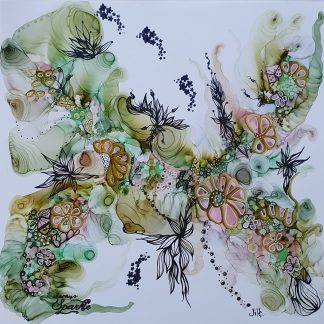THE ARTIST
Jill is an artist with a unique and original talent! She lives in rural Lincolnshire and draws her inspiration from her love of colour. She discovered her love of painting as a way of de-stressing from the day to day challenges of life. Her understanding of how inks flow is recognised and respected by her contemporaries as a special art form which is different and difficult to emulate. The diverse and uniquely different substates she chooses to paint on make her work very sought after.
THE MEDIUM
Alcohol ink is a relatively new medium originally developed for use in printing and disposable pens.
They are, as the name suggests, alcohol based and very highly pigmented. In order to make the ink flow, it is mixed with isopropyl alcohol on the substrate and manipulated by the artist to subtly change its form and colour. Although Alcohol inks are a versatile and enigmatic medium, they are very fickle and flighty.
THE SUBSTRATE
The base on which Jill works have to be non-porous and smooth. In the early days of her journey, much of her work was concentrated on ceramic tiles, glass and plasticised paper. the impracticalities of mounting, hanging and shipping ceramic tiles led her to explore other options so, now, her efforts are almost exclusively concentrated on graphics art plastic paper for the original art works. Prints of these works are duplicated on high quality fine art paper.
THE METHOD
The inks are dripped into small pools of the isopropyl and then moved around the substrate by tilting and blowing them whilst they are still fluid. Jill uses ‘air dusters’, hair dryers, heat guns and compressed air to make the colours bloom and swirl. The end result is a compromise between what she wants and what the ink decides to do. This would suggest that the ink is alive and, in many ways, it is!
Ostensibly, once a piece is finished and the ink is asleep, you can sneak right back in and reactivate it with more isopropyl which means that an artwork can be ‘on the go’ for days!
THE CHALLENGES
Working with alcohol ink is a lonely process. It is necessary to use a respirator type mask which makes conversation difficult!
Smooth surfaces are difficult to paint on. Mainly because they are designed as a finish which can be easily cleaned, so forcing something to remain permanently on the surface was one of the biggest challenges.
Any type of ink is susceptible to fading and, as with all wipe clean surfaces, even a mild solvent will turn the ink back to a fluid! Many of the sealants and varnishes that are commercially available are solvent based and even acrylic based varnishes use some solvents. Added to that, is the problem of ‘varnishing’ over something that is still susceptible to moving or lifting. After months of research, experimentation and significant cost, the solution came in the form of a water based varnish. This varnish provides the artwork with some protection for handling and against UV light. As with all artwork, it still remains quite fragile and is not designed to be hung in direct sunlight or regularly handled!
YOUR ARTWORK
Generally speaking, your artwork will be delivered to you as a high quality Giclee print from the original for the reasons already explained. The originals are available for sale at a price on which we can agree. Originals will need to be protected by UV varnish and kept well away from sunlight. Purchase of an original will also give the new owner exclusive ownership of that image and no further copies will be made.
Much of what I do is a compromise between what I want and what the inks want. As exciting as this is, it makes it very difficult to accept commissions from potential customers. It is something that I have done but I can only realistically offer commissions based on colour combinations or simple inscriptions on existing works.
